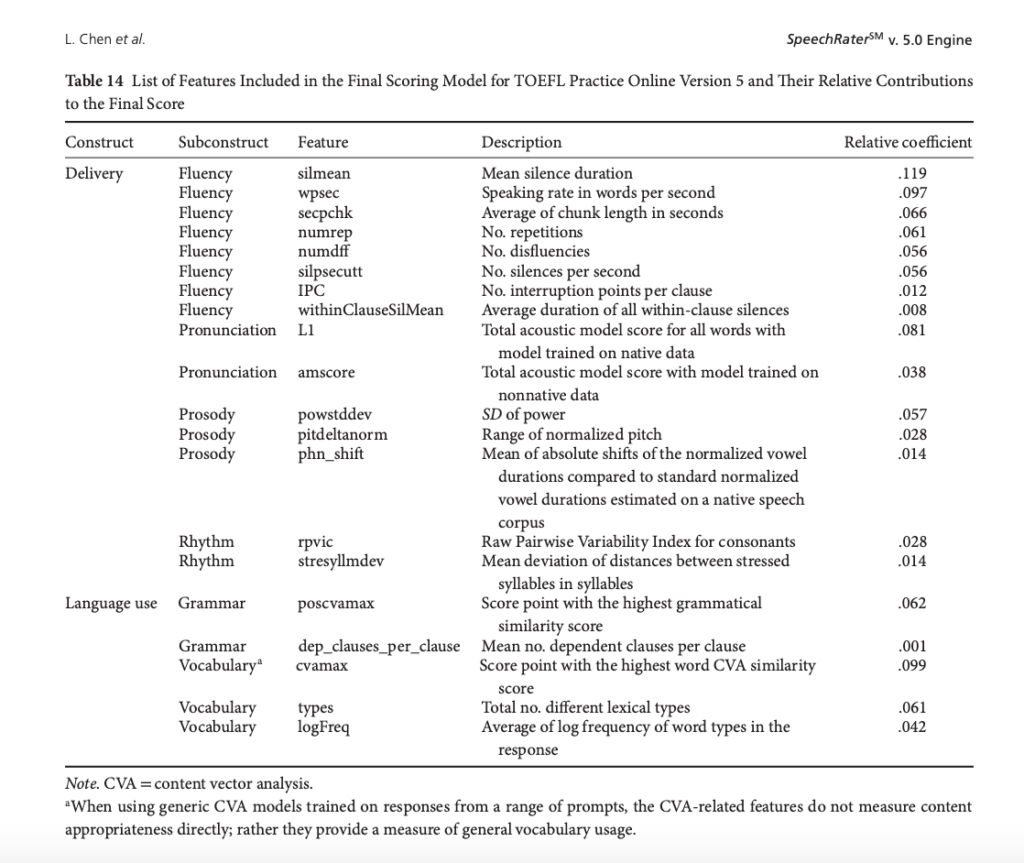On August 1st of 2019, ETS announced a revised version of the TOEFL test. Overall, the test is slightly easier in terms of difficulty level. After the revision, some test questions have been deleted and the test time has been reduced to 3 hours. This major change in testing format is one of the greatest alterations of the test since ETS completely replaced paper-based tests with internet-based tests in 2006. Let’s take a look at the changes that appear on the new TOEFL test.
Estimated reading time: 10 minutes
Table of contents
Shortened TOEFL testing time
First, it is apparent that the test has become more simplified with the deletion of certain questions. The entire test has also been shortened by half an hour.
| Section | Before August 1, 2019 | After August 1, 2019 |
|---|---|---|
| Reading | 3-4 passages 12-14 questions per passage Time: 50-80 minutes | 3-4 passages 10 questions per passage Time: 50-80 minutes |
| Listening | 4-6 Lectures (6 questions each) 2-3 Conversations (5 questions each) Time: 60-90 minutes | 3-4 Lectures (6 questions each) 2-3 Conversations (5 questions each) Time: 41-57 minutes |
| Speaking | 6 questions2 Independent Tasks 4 Integrated Tasks Time: 20 minutes | 4 questions1 Independent Task 3 Integrated Tasks Time: 17 minutes |
| Writing | 2 questions 1 Independent Task 1 Integrated Task Time: 50 minutes | No change |
| Total Time | 3.5 hours | 3 hours |
Ability to Combine Scores of Each Section: MyBestScores
The next change is one that many students are excited about: the new score combination policy. ETS has approved test takers to combine their highest scores on each test section between multiple tests. This new rule has been applied since August 2019.
Below, you will find an example provided on the ETS official website regarding score combinations. The example illustrates a student who has taken the TOEFL test three times:
| Section | Test Date One | Test Date Two | Test Date Three | MyBestScores |
|---|---|---|---|---|
| Reading | 24 | 23 | 23 | 24 |
| Listening | 19 | 20 | 22 | 22 |
| Speaking | 20 | 20 | 21 | 21 |
| Writing | 21 | 23 | 22 | 23 |
| Total Score | 84 | 86 | 88 | 90 |
Relative to all three attempts, the student scored the highest on their Reading section on the first attempt and received a final score of 84. In the second attempt, they scored the highest on their writing section, receiving a total score of 86. In the third attempt, they scored the highest in both the Listening and Speaking sections, receiving a total score of 88. However, after the process of combining their highest scores and receiving their MyBestScores, the student received a total score of 90.

Looking at each test attempt independently, the student did not score 90 in any of their attempts. However, the student did eventually receive a score of 90 after ETS combined all their highest scores in each section: that is the power of MyBestScores! If your top choice school accepts MyBestScores, this new policy will be extremely beneficial to you!
Please note: not every school accepts MyBestScores; some schools do not permit using this feature and may only accept one test score from the same attempt. Please research the schools’ policies prior to applying to them and reach out to admission officials via email to double-check if they permit MyBestScores.
Reading: Reduced Number of Questions
The number of Reading passages, the presence of experimental questions, and the time allotted to this section remains the same, but there are now fewer questions in total.
| Section | Before August 1, 2019 | After August 1, 2019 |
|---|---|---|
Reading | 3-4 passages 12-14 questions per passage Time: 50-80 minutes | 3-4 passages 10 questions per passage Time: 50-80 minutes |
- If there are no experimental questions, the duration of this section is now 54 minutes as opposed to 60 minutes from the old test.
- If there are experimental questions, then the duration of this section is now 72 minutes as opposed to 80 minutes.
- The number of questions has been reduced to 10 questions per passage, as opposed to 14 questions per passage. Summary and insert questions will remain the same, while some detail-oriented, vocabulary, inference, and reference questions may be removed.
Please note: All types of Reading questions (detail, reference, inference, etc.) will still be on the test. The only change is the frequency of the appearance of these questions.
Listening: Reduced Number of Questions
The number of Conversations and questions in the Listening section remains the same, while the number of Lectures is reduced.
| Section | Before August 1, 2019 | After August 1, 2019 |
|---|---|---|
| Listening | 4-6 Lectures. (6 questions each) 2-3 Conversations. (5 questions each) Time: 60-90 minutes | 3-4 Lectures. (6 questions each) 2-3 Conversations. (5 questions each) Time: 41-57 minutes |
After this change, the Listening section can be split into two main sections: one small section and one big section.
The number of questions associated with the Conversation and Lecture parts does not change; there are 5 questions associated with each Conversation and 6 questions associated with each Lecture.
What comes first: the small section
This section is comprised of 1 Conversation and 1 Lecture, accompanied by 11 questions in total.
What comes second: the big section
This section is comprised of 1 Conversation and 2 Lectures, accompanied by 17 questions in total.
If there are experimental questions, then another small section is added (comprising of 1 Conversation and 1 Lecture, accompanied by 11 questions in total.)
Speaking: Reduced Number of Questions
Instead of 6 Speaking Tasks, this section now consists of 4 Speaking Tasks. Referring to the old test version, Independent Task 1 and Integrated Task 5 have been removed. The remaining 4 questions are reordered from 1 to 4.
| Section | Before August 1, 2019 | After August 1, 2019 |
|---|---|---|
| Speaking | 6 questions2 Independent Tasks 4 Integrated Tasks Time: 20 minutes | 4 questions1 Independent Task 3 Integrated Tasks Time: 17 minutes |
Independent Task 1
Independent Task 2 → Changed to: Independent Task 1
Integrated Task 3 → Changed to: Integrated Task 2
Integrated Task 4 → Changed to: Integrated Task 3
Integrated Task 5Integrated Task 6 → Changed to: Integrated Task 4
Speaking Rating: Provided by Both Computer and Real-Life Raters
In the past, the score for the Speaking section was the average of two scores given by two human raters. After the change, ETS launched the SpeechRater computer rating system. Each answer will only be graded by one human rater, so accurate pronunciation has become even more important now. If the computer system cannot clearly decipher your pronunciation, then your score may be negatively impacted.
Phoebe, an instructor at helloTOEFL, is currently creating a program called “Fundamentals of English Alphabet Pronunciation”. If you would like to improve your pronunciation, this program will be perfect for you.

From our understanding, SpeechRater has constantly been experimented with, researched, and improved. As ETS finally integrates this system in the official TOEFL test, this means the computerized program has been finalized and perfected.
As a result, the new Speaking section is changed to the following:
The scoring of each Speaking answer is comprised of 2 parts:
A score provided by a human rater + a score provided by a computerized AI program (SpeechRater)Each Speaking answer is scored by a different human rater (so 4 questions = 4 human raters). The scoring of each Speaking answer is always comprised of the aforementioned 2 parts (human + AI). One human rater will never score two of the student’s Speaking answers at the same time, which makes the scoring process more objective.
The score provided by human raters may fluctuate often due to the rater’s biases, level of concentration, and more confounding factors. Using SpeechRater allows the scoring process to be more accurate and be less prone to fluctuations, which enhances the fairness and reliability of the TOEFL test.
SpeechRater Scoring Mechanism Analysis
ETS has published a research report regarding SpeechRater and its mechanisms. The first 22 pages were about technical details. However, on the 23rd page of this report, 20 points regarding the scoring of Speaking answers are listed. These points tell us that fluency, pronunciation, prosody, rhythm, grammar, and vocabulary and the main elements that affect the scoring. By being familiar with the following 20 points, you will be able to avoid Speaking mistakes that may lower your score.


The 20 Critical Points that Affect AI Speaking Scoring
On page 23 of the report, there are 20 scoring points highlighted, mainly split into the two categories of “Delivery” and “Language Use.”
| Construct | Subconstruct | Description |
|---|---|---|
| Delivery | Fluency | Mean silence duration |
| Fluency | Speaking rate in words per second | |
| Fluency | Average of chunk length in seconds | |
| Fluency | No. repetitions | |
| Fluency | No. disfluencies | |
| Fluency | No. silences per second | |
| Fluency | No. interruption points per clause | |
| Fluency | Average duration of all within-clause silences | |
| Pronunciation | Total acoustic model score for all words with model trained on native data | |
| Pronunciation | Total acoustic model score with model trained on nonnative data | |
| Prosody | SD of power | |
| Prosody | Range of normalized pitch | |
| Prosody | Mean of absolute shifts of the normalized vowel durations compared to standard normalized vowel durations estimated on a native speech corpus | |
| Rhythm | Raw Pairwise Variability Index for consonants | |
| Rhythm | Mean deviation of distances between stressed syllables in syllables | |
| Language use | Grammar | Score point with the highest grammatical similarity score |
| Grammar | Mean no. dependent clauses per clause | |
| Vocabulary | Score point with the highest word CVA similarity score. | |
| Vocabulary | Total no. different lexical types | |
| Vocabulary | Average of log frequency of word types in the response |
Delivery
The first big category is Delivery. Within, there are 4 subcategories:
- Fluency
- Pronunciation
- Prosody
- Rhythm
Language use
The second big category is Language use. Within, there are 2 subcategories:
- Grammar
- Vocabulary
In Summary: How To Achieve the Highest TOEFL Speaking Score
In order to achieve the highest Speaking score, it is important to aim to satisfy the subconstructs: fluency, pronunciation, prosody, rhythm, grammar, and vocabulary. Based on information in the report, such as the specific details on how the scoring is distributed across the different subconstructs, we have come to the following 4 conclusions:
- Avoid unnecessary pauses
Only intentional pauses are okay; if there are too many unnecessary pauses, especially ones that span more than a couple of seconds, your TOEFL Speaking Score may be lowered. - Use synonyms
“Score point with the highest word CVA similarity score” is the second most impactful element in your Speaking score. The more synonyms you use when portraying similar ideas, the better your score. On the contrary, if you continuously use the same word to present your ideas, you may receive a lower score. - Appropriate speed
The third most impactful element is your “Speaking rate in words per second,” which is the speed at which you speak. The faster you speak, the more fluent you will sound and the higher your score will be. Of course, please ensure that your words are intelligible.
Note: Flash the Sloth may not be able to receive a high Speaking score due to his slow speaking speed, but that doesn’t mean you must speak at the speed of light. A balanced speed with correct intonation and intentional pauses, such as pauses at commas or periods, is the key to receiving a high Speaking score.

- Sounding like a native speaker
The rater can tell whether you are fluent in speaking English based on your intonation, pronunciation, and other factors that a Native speaker would easily succeed in. This will take practice. The more fluent and “native” you sound, the higher you will score.
Visit the ETS TOEFL website for more information
For more information on the TOEFL iBT Test, please visit the ETS website. Please also refer to the official FAQ pdf on the website to learn more about the revised TOEFL test.

